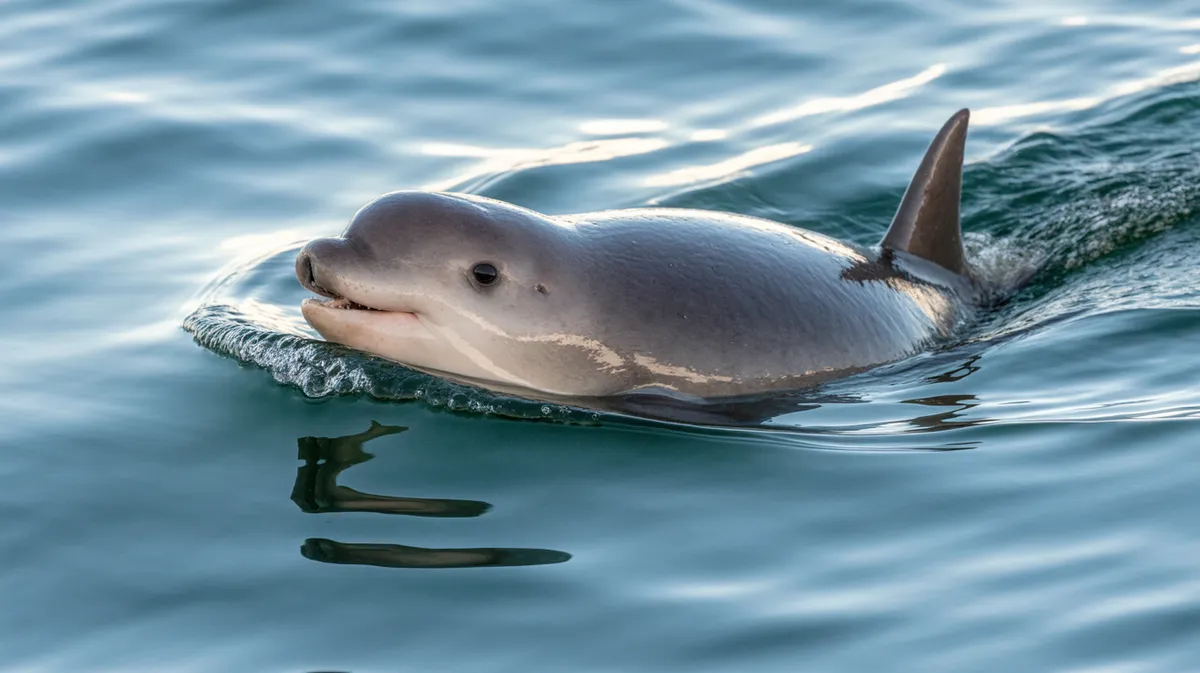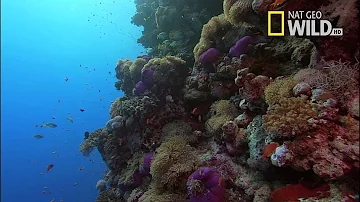
Harbor Porpoise
Phocoena phocoena

Meet the Harbor Porpoise
The harbor porpoise is a small, robust cetacean that frequents the cool coastal waters of the Northern Hemisphere. Recognized by its short, blunt snout and triangular dorsal fin, it is one of the smallest marine mammals, rarely exceeding 1.9 meters in length. Adapted for life in shallow seas, the harbor porpoise feeds primarily on small fish and invertebrates, using echolocation to navigate and hunt. This elusive species is known for its shy behavior, often avoiding boats and rarely leaping out of the water.
Classification
Mammal
Habitat
Coastal and temperate ocean waters
Diet
Carnivore
Lifespan
8-12 years
Conservation
Least Concern
Weight
45–65 kg
📖Fascinating Facts
Shallow Water Dweller
Harbor porpoises prefer shallow coastal waters less than 200 meters deep, making them susceptible to human activities near shore.
Expert Echolocator
They use high-frequency clicks for echolocation, which helps them find prey and navigate in murky or dark waters.
Diet of Small Fish
Their diet consists mainly of small schooling fish such as herring, sprat, and sand eels, as well as squid and crustaceans.
📋Detailed Description
The harbor porpoise (Phocoena phocoena) is a small, robust cetacean distinguished by its compact body, rounded head with a short, blunt beak, and a low, triangular dorsal fin positioned midway along its back. Adults typically measure 1.4 to 1.9 meters in length and weigh between 45 and 70 kilograms, with females generally larger than males. Their coloration is dark gray to brownish on the back, fading to lighter gray and white on the flanks and belly, providing camouflage in coastal waters. Harbor porpoises possess 22–28 pairs of spade-shaped teeth in each jaw, adapted for grasping slippery prey. Their streamlined bodies and small flippers allow for agile maneuvering in shallow, turbulent waters. They are well-adapted to cold environments, with a thick blubber layer for insulation and energy storage. Harbor porpoises are generally solitary or found in small groups of two to five, though aggregations of up to several dozen may occur in areas of abundant prey. They are highly sensitive to underwater sounds and rely on high-frequency echolocation clicks for navigation, prey detection, and communication. Their elusive nature and tendency to avoid boats make them less conspicuous than other cetaceans. Harbor porpoises are distributed throughout the temperate and subarctic coastal waters of the Northern Hemisphere, including the North Atlantic, North Pacific, and Black Sea, with several recognized subspecies reflecting regional adaptations.
💡 Did you know?
Despite their name, harbor porpoises are often found far from actual harbors and can even occur in brackish or freshwater rivers.
🔬Research & Sources
Wikipedia Summary
The harbour porpoise is one of eight extant species of porpoise. It is one of the smallest species of cetacean. As its name implies, it stays close to coastal areas or river estuaries, and as such, is the most familiar porpoise to whale watchers. This porpoise often ventures up rivers, and has been seen hundreds of kilometres from the sea. The harbour porpoise may be polytypic, with geographically distinct populations representing distinct races: P. p. phocoena in the North Atlantic and West Africa, P. p. relicta in the Black Sea and Sea of Azov, an unnamed population in the northwestern Pacific and P. p. vomerina in the northeastern Pacific.
Last Modified: 5/27/2025
🎭Behavior & Social Structure
Harbor porpoises are primarily diurnal, with peak activity during daylight hours, although they may feed opportunistically at night. They exhibit a generally shy and inconspicuous demeanor, rarely breaching or bow-riding, and often surface quietly for air. Their surfacing behavior is brief, typically lasting less than a second, which, combined with their small size, makes them difficult to observe. Harbor porpoises are opportunistic feeders, employing rapid, agile swimming and acute echolocation to hunt small schooling fish such as herring, sprat, and sand eels, as well as cephalopods and crustaceans. They often forage alone or in small groups, using coordinated movements to herd prey. Social interactions are subtle, involving occasional contact calls and body postures, but they lack the complex social structures seen in dolphins. Daily routines involve alternating periods of foraging, traveling, and resting, with individuals covering extensive distances along coastal habitats.
👶Reproduction & Life Cycle
Harbor porpoises exhibit seasonal breeding, with mating typically occurring in late spring to early summer (May to August) in most populations. Females reach sexual maturity at 3–4 years of age, while males mature slightly earlier. Gestation lasts approximately 10–11 months, resulting in the birth of a single calf, usually between May and August. Newborn calves measure about 65–75 cm in length and weigh 6–10 kg. Calves are nursed for 8–12 months, during which time they remain closely associated with their mothers, learning essential survival skills. Females may give birth annually or biennially, depending on environmental conditions and food availability. Parental care is primarily provided by the mother, with little to no involvement from males. Calf survival is highly dependent on maternal experience and environmental factors such as prey abundance and disturbance.
🛡️Adaptations & Survival
Harbor porpoises are evolutionarily specialized for life in cold, shallow, and often turbid coastal waters. Their thick blubber layer provides insulation against low temperatures and serves as an energy reserve during periods of food scarcity. The species' small, rounded pectoral fins and low dorsal fin reduce heat loss and enable agile maneuvering in complex habitats. Their high-frequency echolocation system, producing clicks up to 150 kHz, allows for precise prey detection and navigation in murky or cluttered environments. Harbor porpoises have a high metabolic rate, necessitating frequent feeding and efficient foraging strategies. Their cryptic coloration and unobtrusive surfacing behavior reduce predation risk from killer whales and sharks. Additionally, their ability to tolerate low salinity enables them to exploit estuarine and even freshwater habitats.
📚Research Sources
🎨Cultural Significance
The harbor porpoise has played a modest role in human culture, often overshadowed by larger or more charismatic cetaceans. In some coastal communities of Northern Europe, porpoises were historically hunted for meat and oil, though such practices have largely ceased. The species appears in regional folklore and maritime traditions, sometimes regarded as omens or symbols of good luck for fishermen. Today, the harbor porpoise is valued as an indicator species for the health of coastal marine ecosystems and is a focus of conservation and public awareness campaigns, particularly in Europe.
🔬Recent Research & Discoveries
Recent research has focused on the impacts of anthropogenic noise on harbor porpoise behavior and physiology, revealing that even moderate noise levels can disrupt foraging and communication. Advances in passive acoustic monitoring have improved population estimates and detection of cryptic behaviors. Genetic studies have clarified subspecies boundaries and highlighted the vulnerability of isolated populations, such as those in the Baltic and Black Seas. Ongoing research addresses the effects of chemical pollutants on reproductive health and immune function. Innovative bycatch mitigation technologies, such as acoustic deterrent devices (pingers), are being tested to reduce incidental capture in fisheries. Long-term monitoring programs are critical for assessing population trends and the effectiveness of conservation measures.
🎥Wildlife Videos

The Harbor Porpoise: An Endangered Marine Mammal
A special endangered harbor porpoise, a small, toothed whale, found only in the baltic sea.
WildEarth1

Facts: The Harbor Porpoise
Quick facts about this small marine mammal that likes cold water! The harbor porpoise (Phocoena phocoena). Harbor porpoise ...
Deep Marine Scenes

Sleepy Harbour Seals and Adorable Pups! | The Science Of Cute | BBC Earth
The Science of Cute Episode 1 Welcome to BBC EARTH! The world is an amazing place full of stories, beauty and natural wonder ...
BBC Earth

The Harbour Porpoise: Why we should know about this animal.
A little portrait about an animal that has a wonderful character, but that isn't beneficial for the species. This is the story of the ...
Daniel A.D. Wiersma

WDFF 2019 - Trailer for THE RETURN OF HARBOR PORPOISES TO SAN FRANCISCO BAY
THE RETURN OF HARBOR PORPOISES TO SAN FRANCISCO BAY will have its Canadian Premiere screening at Water Docs ...
Water Docs

Desert Seas Narrated by David Attenborough | National Geographic Documentary
Along the east and west coasts of Saudi Arabia are two seas that contain a treasure of marine life that few knew existed -- and ...
J Roz
🌍Habitat Information
The Harbor Porpoise typically inhabits Coastal and temperate ocean waters environments. Harbor Porpoises have adapted to their environments with specialized features and behaviors.
Primary Habitat:
Coastal and temperate ocean waters
More detailed habitat information will be available soon.
🛡️Conservation Status
The Harbor Porpoise is currently classified as Least Concern. Conservation efforts are crucial for preserving this species for future generations.
Common Threats:
- 🏠Habitat loss and fragmentation
- 🌡️Climate change impacts
- 🎯Hunting and poaching
- 🏭Human-wildlife conflict
⚠️Threats & Conservation Challenges
Despite being classified as Least Concern globally, harbor porpoises face significant regional threats. Bycatch in gillnets and other fishing gear is the leading cause of mortality, resulting in thousands of deaths annually, particularly in the North Sea, Baltic Sea, and Black Sea. Other threats include habitat degradation from coastal development, noise pollution from shipping and construction, chemical contamination (e.g., PCBs, heavy metals), and depletion of prey stocks due to overfishing. In some regions, populations are fragmented and declining, with the Baltic Sea and Black Sea subspecies considered critically endangered. Climate change may further impact prey availability and distribution. Conservation efforts focus on bycatch reduction, habitat protection, and monitoring population trends, but enforcement and mitigation remain challenging.
🔬Scientific Classification
Scientific Name
Phocoena phocoena
Classification Hierarchy
🔍 About Taxonomic Classification
Taxonomic classification is a hierarchical system used by scientists to classify and organize living organisms based on shared characteristics and evolutionary relationships.
The system moves from broad categories (Kingdom) to increasingly specific ones, with each animal's scientific name typically consisting of its Genus and species.
📝Community Notes
Share your observations and insights about the Harbor Porpoise with our community of wildlife enthusiasts.
Join Our Community
Sign in to share your observations and connect with fellow wildlife enthusiasts.
Sign In to ContributeNo community notes yet
Be the first to share your observations about the Harbor Porpoise!
Explore Harbor Porpoise
Select a tab above to learn more about this amazing animal.
📸Photo Gallery
No photos available for this animal yet.
🌟Discover More Wildlife
Continue your journey of discovery with more fascinating animals from our database
